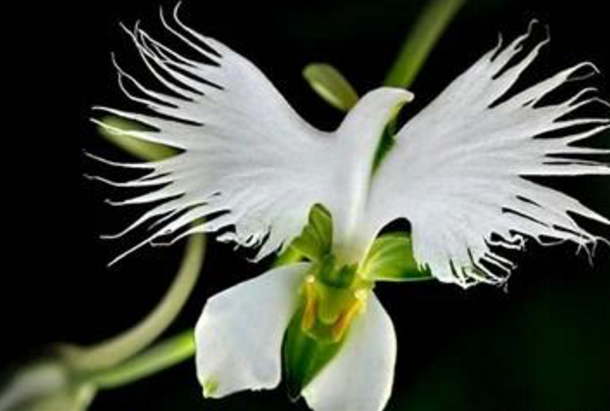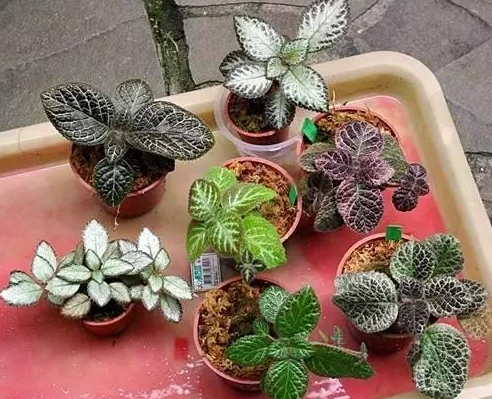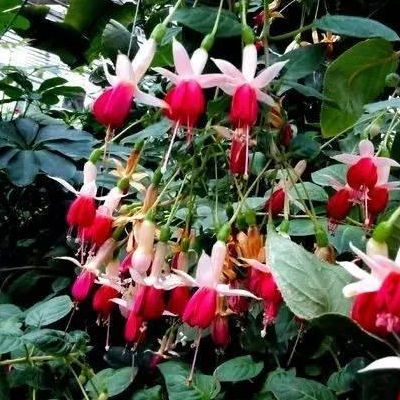The culture method of egret flower when is the florescence?
Egret flower, this is a lot of people like breeding, the flowers are white, is really very attractive, egret flower culture method is what? When is the flowering time of egret flowers:

Egret flowers belong to perennial orchids with globular seeds.
Generally, the basin is put on the basin in March (the temperature is about 20 degrees), and the fine red jade soil is usually used as the medium. in order to increase the organic matter of the cultivated soil and increase the fertility, the medium can use 50% of immortal soil + 50% of red jade soil.
Fairy soil contains a variety of trace elements, coupled with its own cohesion, not loose, good water retention, air permeability, no consolidation, no bacteria, no disorderly roots, more sprouting, no fertilization within two years, 3-5 years can be slightly applied thin fertilizer.
The smallest specifications are used in both mediums. When planting, one end has a bud point facing up, and the pot after covering the soil gently piers the mound, so that the soil and seeds fully fit.
Watering is in the form of spray water, and egrets like moist environments as much as calamus. From April to May, the seeds began to sprout, and the seedlings slowly grew bigger and grew into flowers and arrows.
Egret flowers bloom in summer, during which time you should pay attention to shading and moisturizing. Cut off the arrows with sterilized scissors after the flowers fade. In autumn, the leaves will slowly turn yellow, in winter to pay attention to anti-freezing, the leaves will wither, but the seeds in the soil do not die, and grow new bulbs.
This is the end of the introduction on the breeding methods and florescence of egret flowers. Come and plant them quickly.
The Culture method of Egret Grass
Egret grass is a plant of the genus Orchidaceae, named because its flowers resemble egrets that spread their wings. Egret grass gets its name because its flowers are like egrets. It likes wet places and thrives on underground bulbs. Due to some large-scale and destructive man-made mining, egret grass is on the verge of extinction in the wild, so the only remaining egret grass becomes more and more precious. Next, let's enjoy the beautiful elves of nature.
Egret grass flower language
The flowers swayed in the wind, like a flock of egrets flying across the sky. The fantasy white egret blossoms in early summer when it is not very hot. When you rest on the sofa, look out the window and see a patch of egret dancing in the wind, you will wish you were locked up in nature. In the dream, you become an egret and fly gracefully across the sky.
It is beautiful to insert only one plant or to plant a single plant.
VRV _ x0000_i1025 = "_ shapesi" >
Style='orphans: auto;text-align:start;widows: 1 words webkit, text, stroke, width, 0px, word-spacing:0px'', vane, shapeses, "_ x0000_i1026" >
Egret grass belongs to perennial Orchidaceae, and its seeds are spherical. Generally, the basin is put on the basin in March (the temperature is about 20 degrees), and the fine red jade soil is usually used as the medium. in order to increase the organic matter of the cultivated soil and increase the fertility, the medium can use 50% of immortal soil + 50% of red jade soil. Fairy soil contains a variety of trace elements, coupled with its own cohesion, not loose, good water retention, air permeability, no consolidation, no bacteria, no disorderly roots, more sprouting, no fertilization within two years, 3-5 years can be slightly applied thin fertilizer. The smallest specifications are used in both mediums. When planting, one end has a bud point facing up, and the pot after covering the soil gently piers the mound, so that the soil and seeds fully fit. Cover the basin with thin water moss to moisturize.
Watering is in the form of spray water, and egrets like moist environments as much as calamus. From April to May, the seeds began to sprout, and the seedlings slowly grew bigger and grew into flowers and arrows. The flowering period of heron grass is summer, during which time you should pay attention to shade. Moisturizing. Cut off the arrows with sterilized scissors after the flowers fade. In autumn, the leaves will slowly turn yellow, in winter to pay attention to anti-freezing, the leaves will wither, but the seeds in the soil do not die, and grow new bulbs. Growth habit
Perennial herbs
Lowest altitude: 1200
Highest altitude: 1900
Living environment: hillside or forest grassland
Whether to cultivate or not: wild
Domestic distribution: Sichuan (Nanchuan, Muli), Yunnan (Dali, Kunming, Maguan, Mengzi, Simao, Wenshan) and Guizhou (Ceting, Anlong, Guiding).
Distribution in Hubei: Xianfeng, Enshi, Badong
The root is a little thick, how much fleshy. Leaves striate or ligulate, 17-67 cm long and 1.3-3.2 cm wide, apex long acuminate, base obviously narrowed, margin finely serrate, soft. Scape erect, 30-85 cm tall; racemes or panicles sparsely many flowered; flowers white, often twin, open one by one; pedicels 6-12 mm long, with a conspicuous joint; tepals striate, all with 3 veins, 20-23 mm long and 2-3 mm wide, outer whorl 3 slightly narrower than inner whorl 3; stamens divergent, filaments 8.5-12 mm long Anthers 13 mm long, ±T-shaped, basal caudate appendages 2.5-3 mm long, apex extremely acute; ovary with 4-11 ovules per locule (usually 7-8). The flowering and fruiting period is from July to October.
Breeding methods and matters needing attention of egret
Another name: egret grass
Latin scientific name: Dichromena colorata
Families and genera: Cyperaceae
Distribution of origin: southern United States
The erect aquatic plant of the egret has an erect stem and a height of only 15-30cm. The florescence is from June to September. Wet loam is the best soil. There should be plenty of light. It is warm and resistant to high temperature, and the suitable temperature for growth is about 20-28 ℃. The suitable time is from spring to autumn for the method of sowing or dividing plants.
- Prev

What is the relationship between how to cultivate Xi Yinhua and lipstick?
Xi Yinhua, this kind of plant is super likable, this Xiyinhua is so likeable, how to cultivate this Xiyinhua: Xiyinhua and lipstick are relatives, so the flowers are a little similar, leaf color and flower color are very rich, take a look at the picture below, the variety is also very rich, viewing leaves and flowers can be done.
- Next

The culture method of hanging bell begonia how long is the florescence?
Hanging bell crabapple, many people have seen this kind of plant, this hanging bell crabapple flowering is really super beautiful, what is the breeding method of hanging bell begonia? What is the florescence of hanging bell begonia: the culture method of hanging bell begonia: 1. Hanging bell begonia has different lighting requirements in different seasons.
Related
- Fuxing push coffee new agricultural production and marketing class: lack of small-scale processing plants
- Jujube rice field leisure farm deep ploughing Yilan for five years to create a space for organic food and play
- Nongyu Farm-A trial of organic papaya for brave women with advanced technology
- Four points for attention in the prevention and control of diseases and insect pests of edible fungi
- How to add nutrient solution to Edible Fungi
- Is there any good way to control edible fungus mites?
- Open Inoculation Technology of Edible Fungi
- Is there any clever way to use fertilizer for edible fungus in winter?
- What agents are used to kill the pathogens of edible fungi in the mushroom shed?
- Rapid drying of Edible Fungi

